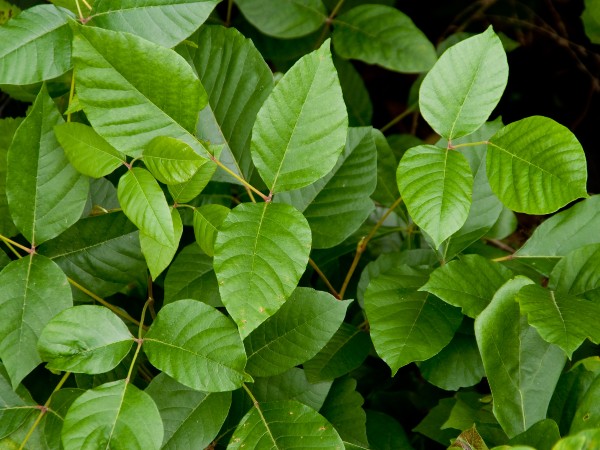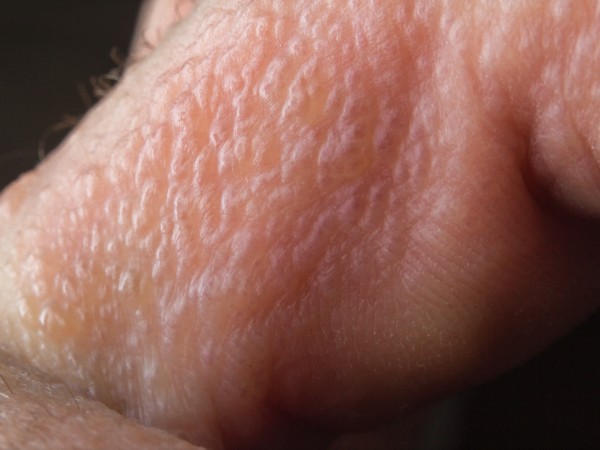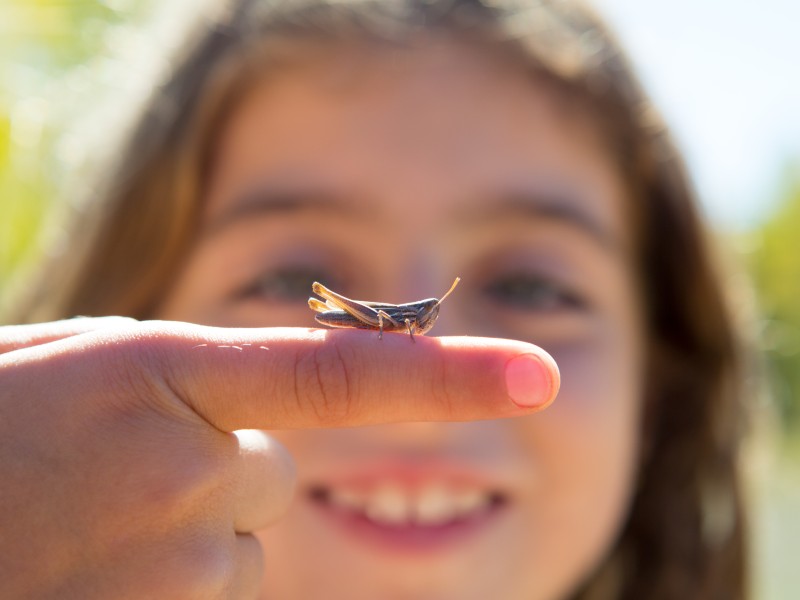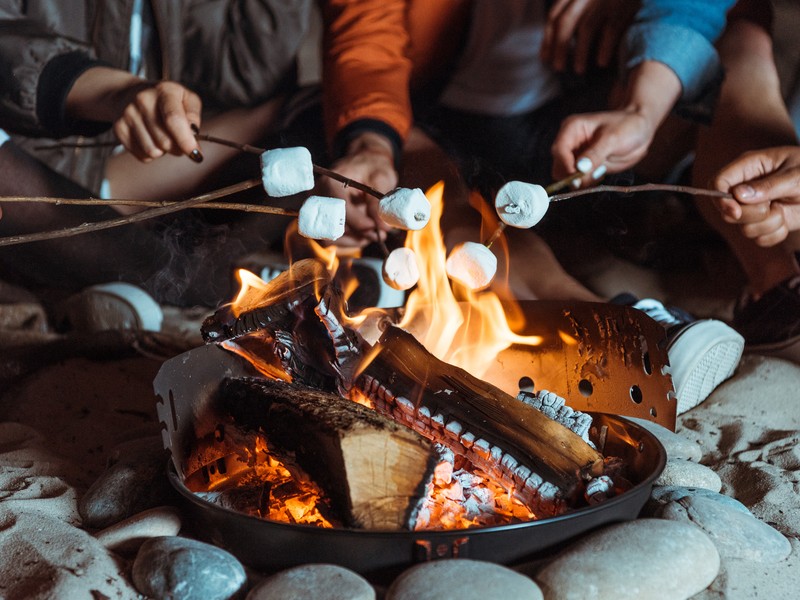What Does a Poison Ivy Look Like?

Before you understand how to handle a rash from poison ivy, you should understand what poison ivy looks like so you don’t put yourself in such a situation. There are certain cardinal rules in determining what poison ivy is.
If you are camping in a heavily wooded area, you will see various kinds of plants and vegetation. Therefore, it is crucial to understand how to discern what it looks like.
Some tips to help you identify poison ivy include:
- each leaf contains three leaflets
- leaf edges are notched or smooth
- a shrub in the Northern/Western US and Canada vs. a vine in the East, Midwest, and South
When Should You See a Doctor?
Most cases of poison ivy exposure tend to heal without the need for medical intervention. However, there are certain situations where a doctor may be needed.
Here are some of the following characteristics of a poison ivy rash that you’d need to see a doctor for:
- the rash contains soft, yellow scabs or pus
- does not improve after 7-10 days
- covers approximately 25 percent of your skin
- is near the mouth, genitals, or eyes
If you suffer physical symptoms in the form of eye swelling, difficulty swallowing and breathing, a rash near the mouth or a fever, you’d also want to get medical treatment.
How to Alleviate a Poison Ivy Rash
As for actual interventions to take in order to alleviate a poison ivy rash, utilize the following tips.

Rubbing Alcohol
Most of the discomfort from a poison ivy rash comes from the urushiol oil from the poison ivy. Rubbing alcohol can help remove all of this oil from the skin and ease any discomfort.
This is something that should be done as soon as possible after poison ivy contact. Ideally, you’d want to apply some liberally onto the skin within 10 minutes of exercise.
If you are going out camping, you may want to consider carrying some alcohol wipes with you.
The United States Food and Drug Administration also advises that urushiol can remain on the surface of items that come into contact with the oil unless it is treated with rubbing alcohol.
Shower
You will also want to take a shower after getting exposed. Go underneath the water and wash your skin thoroughly, including tough-to-reach places such as underneath your fingernails.
A warm shower with soap and water will be effective in removing the plant oils. While water can be effective in removing the oil from your body, you should use alcohol first.
Showering about 60 minutes after exposure can help limit the severity and spread of the rash.
Resist Scratching
The sensation to scratch your skin after coming into contact with poison ivy can be very tough to handle/ignore and scratching it will cause a bigger rash. However, scratching your skin will only cause your body more harm and lead to a potential infection.
In addition, blisters may also burst which can become infected themselves.
If blisters are open, they should be left alone. The skin will eventually repair itself and eventually cover the skin to provide protection from infection.
In addition, fingernails that are not scrubbed and washed adequately may have trace remains of the urushiol, and that can be transmitted directly onto the skin through scratching. This can lead to an even more severe version of the rash.
Topical Creams/Lotions
Symptoms of a poison ivy rash can lead to discomfort, including swelling and itching. Calamine lotion and hydrocortisone creams are two such products that are used to relieve some of the discomfort that these symptoms can bring.
In addition, to treat the oozing that can be caused by poison ivy, the FDA recommends using products that contain zinc oxide, zinc carbonate, and zinc acetate.
To provide a more soothing sensation, you can utilize aloe vera gel, which is derived directly from the aloe vera plant.
Oatmeal Bath
Taking a shower is important to help prevent the spread of poison ivy, but having an oatmeal bath can also provide you with a variety of benefits as well.
Oatmeal contains a litany of anti-inflammatory and antioxidant properties that will help skin conditions involving inflammation.
If you add oatmeal to a lukewarm bath, it can act as a simple remedy to poison ivy. You may experience symptom relief by immersing yourself in an oatmeal bath for half an hour.
Oral Antihistamines
Antihistamines function by lessening the severity of a potential allergic reaction, which can reduce a rash and itching.
One common antihistamine that is used to help symptoms is Diphenhydramine, also known as Benadryl.
However, you must be advised to not apply antihistamine cream directly onto the rash, as this can directly lead to worse itching (and an increased chance of infection by proxy).
Explore the Great Outdoors with Us!
Cold Compression
One o the biggest complications of poison ivy that can cause damage to the skin is inflammation. In order to alleviate this pitfall, a cool, wet compress should be applied to the skin.
You should run a clean washcloth underneath cold water and apply it to the skin for about 15 to 30 minutes. As needed, you can repeat this process several times a day if the inflammation appears to be sizable.
There are certain people who like to soak the compress in an astringent liquid to further reduce these sensations.
Examples of these potential liquids include chilled black tea, apple cider vinegar, and aluminum acetate.
Baking Soda

Baking soda is a salt that is primarily used as a baking ingredient, but it can also be used as a remedy for certain ailments. Fortunately, poison ivy is one such condition that baking soda can help treat.
You can add a cup of baking soda to a tub to provide relief from poison ivy, as it serves as a natural cleaning agent. This method is even recommended by the American Academy of Dermatology.
Bentonite Clay
A highly popular clay used in personal care products, bentonite clay has been reported by some to provide relief from a poison ivy rash by applying a paste of this clay and water together.
Research has suggested that using a modified version of bentonite clay is effective in reducing the allergic contact dermatitis that can be caused by poison oak and poison ivy.
Effective Ways to Prevent Poison Ivy
Before you go out camping or anywhere that is at risk, you should bear the following tips in mind at all times to keep your skin safe from potential poison ivy exposure.
First, the priority should be to wear protective clothing.
This means that you should be covering up your skin when you are outdoors and leave as little skin exposed as possible. If you are gardening, utilizing PVC gloves can be effective.
Thin, latex gloves do not provide the same effect, as the material is relatively weak and the oil can pass through the glove with ease.
Next, you should wash anything that comes into contact with the plant. Oil from poison ivy that isn’t washed away can linger for years.
This means that anything that comes into contact with it should be washed off, as it can serve as a spreading agent of the oil.
If you happen to have poison ivy in your garden, you should be removing these as well. Since this can be a dangerous and challenging job, you should consult professional help in the removal.
You should also never burn poison ivy because the emanating smoke can cause a severe reaction. Dead plants themselves can even cause contact dermatitis.
Finally, a poison ivy kit should be constructed. This means keeping certain portable essentials on you just in case of exposure.
This includes water bottles, soap, rubbing alcohol, alcohol pads, and other handy items to provide quick interventions.
Final Thoughts
As you can see, poison ivy can be a serious condition that shouldn’t be taken lightly.
One thing I’ve noticed is that when we would go camping with a tent, we would spend more time looking for a good spot instead of the weeds or ivy around it.
To prevent that from happening and remember how to set your tent up before going camping.
Follow these tips and guidelines effectively to give yourself the best possible chance of protecting and handling yourself from potential exposure/rash from poison ivy!
Tips for Treating Poison Ivy (Video)
Related Questions
- What are the distinguishing characteristics of a poison ivy plant?
Poison ivy plants are characterized by their clusters of three leaflets, with the middle leaflet having a longer stem than the other two.
The leaves are usually glossy and can change color with the seasons, being green in spring and summer, and turning yellow, orange, or red in the fall.
- Under what circumstances should one seek medical attention after exposure to poison ivy?
One should seek medical attention after exposure to poison ivy if they experience severe reactions such as difficulty breathing, swelling of the face, mouth, or throat, or if the rash covers a large portion of the body or sensitive areas like the eyes or mouth.
Additionally, if the rash does not improve within a few weeks, or if it’s accompanied by fever, seek medical help as these could be signs of an infection or severe allergic reaction.
- How does rubbing alcohol help in the treatment of a poison ivy rash?
Rubbing alcohol can help in the treatment of a poison ivy rash by removing the plant’s oil, urushiol, which causes an allergic reaction if applied immediately after exposure.
However, it’s not effective once the rash has appeared, and it should be noted that it can dry out the skin, potentially worsening the rash, so it’s generally recommended to use calamine lotion or hydrocortisone cream instead.
- What are some effective home remedies for alleviating the symptoms of a poison ivy rash?
Some effective home remedies for alleviating the symptoms of a poison ivy rash include applying cold compresses to the affected area to reduce inflammation and itching, and using a mixture of baking soda and water as a paste on the rash to soothe irritation.
Additionally, taking an oatmeal bath can help to soothe the skin and reduce itching, while over-the-counter hydrocortisone creams or calamine lotion can also provide relief.
- How can one prevent exposure to poison ivy when camping or spending time outdoors?
To prevent exposure to poison ivy when camping or spending time outdoors, it’s crucial to familiarize yourself with what the plant looks like and avoid areas where it grows, typically in shady, wooded areas.
Additionally, wearing long sleeves, long pants, and closed-toe shoes can provide a physical barrier between your skin and the plant, and always wash your gear and clothing after being in areas where poison ivy may be present.
"Of all the paths you take in life, make sure a few of them are dirt."
-- John Muir






